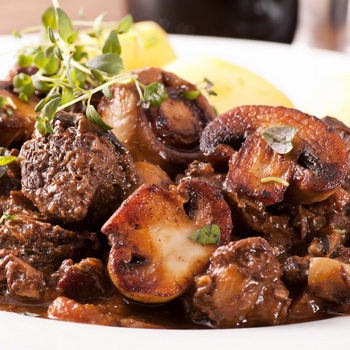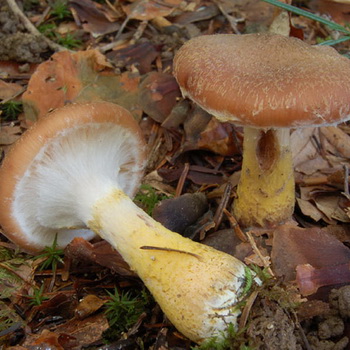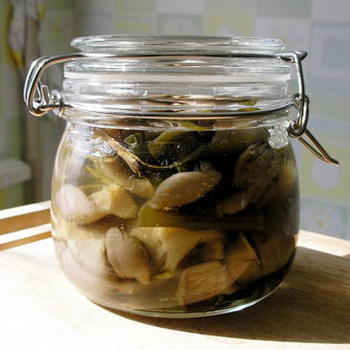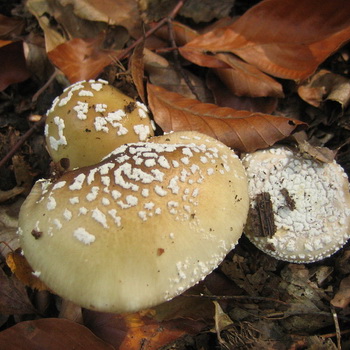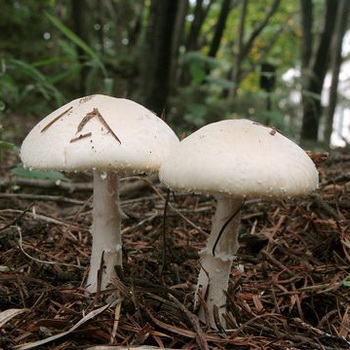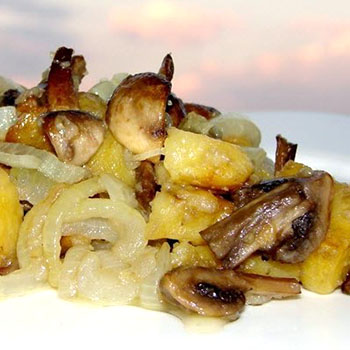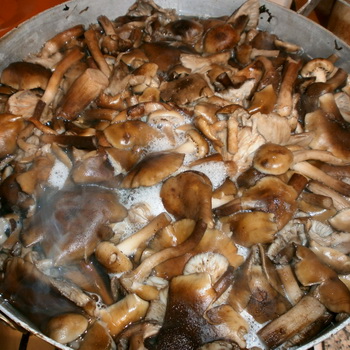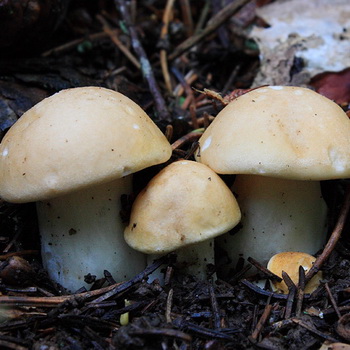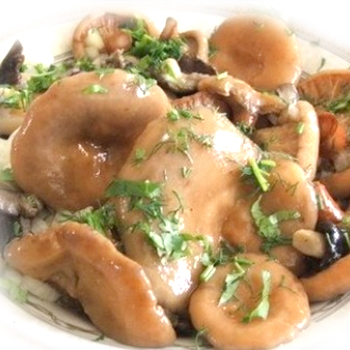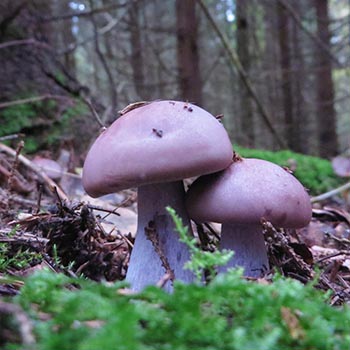Mushrooms: a photo and description of spruce, red and real mushrooms, where edible mushrooms grow
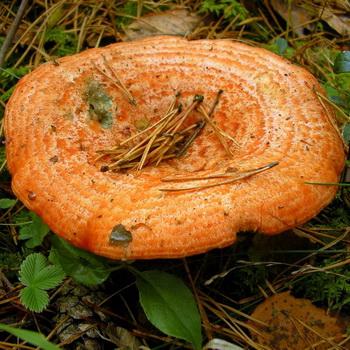 Many mushroom pickers believe that camelina is a mushroom that is in no way inferior in taste to boletus. These gifts of the forest are suitable for preparing a wide variety of dishes, used for salting and pickling. The most common types of saffron milk caps are spruce, red and real.
Many mushroom pickers believe that camelina is a mushroom that is in no way inferior in taste to boletus. These gifts of the forest are suitable for preparing a wide variety of dishes, used for salting and pickling. The most common types of saffron milk caps are spruce, red and real.
On this page you will find out when and in what forest mushrooms grow. And you will also see edible mushrooms in the photo with descriptions.
Where spruce mushrooms grow and photos of mushrooms
Category: edible.
Leg (height 3-8 cm): the same color as the cap, very brittle, cylindrical in shape. In young mushrooms, it is solid, with time it becomes almost hollow.
Plates: very frequent, lighter than caps, turn green when pressed.
Spruce Camelina Plates
Pulp: orange, but in the place of the break and when interacting with air, like milky juice, it quickly changes color to red and then to greenish. Pleasant on the palate, with a fruity aroma.
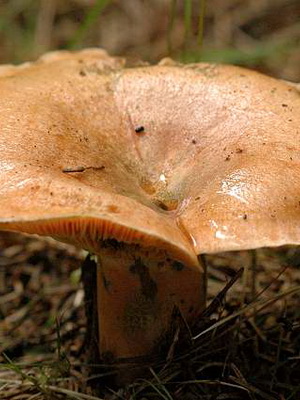
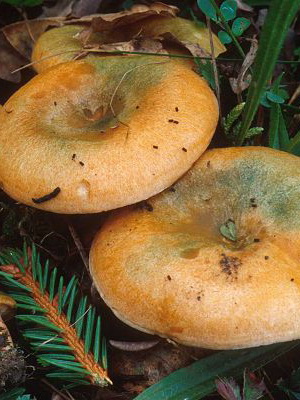
As seen in the photo, spruce mushroom (Lactarius deterrimus) has an orange cap, 3-9 cm in diameter, with a small tubercle in the center. Usually slightly convex, in old mushrooms with a greenish tinge, it may be slightly depressed or funnel-shaped. Very brittle, with slightly pubescent edges. Smooth to the touch, may be sticky in wet weather.
The description of the spruce mushroom is similar to the description waves pink (Lactarius torminosus) and true mushroom (Lactarius deliciosus). However, the orange milky sap does not change color in the wave, and the real mushroom is smaller and grows in all types of coniferous forests.
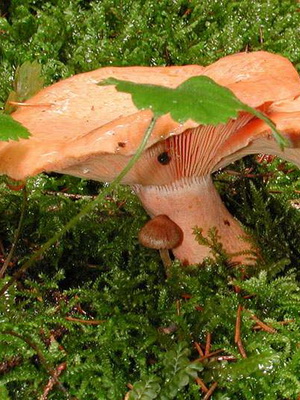
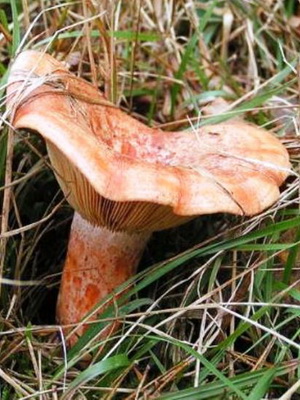
You will find out where you can find mushrooms by going to the coniferous forest. From mid-August to the end of September, literally every spruce forest is covered with these mushrooms.
Eating: delicious in almost any form.
Application in traditional medicine: does not apply.
Other names: spruce, green saffron milk cap.
Red mushroom mushroom: photo and description
Category: edible.
Red Camelina Cap (Lactarius sanguifluus) (diameter 4-17 cm): orange or deep pink, very dense, open or slightly depressed in the center, often with curled edges.
Leg (height 3-9 cm): very strong, cylindrical in shape, expanding from bottom to top.
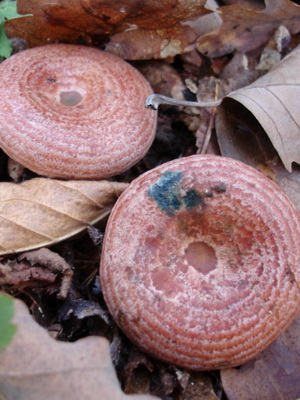
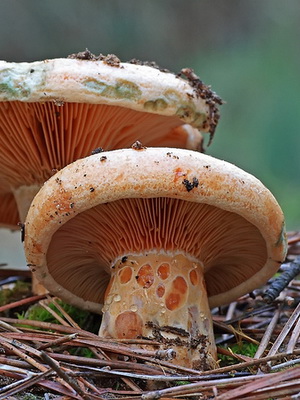
Pay attention to the photo of a red saffron milk cap: often its leg has small pits or a mealy bloom.
Plates: frequent and narrow.
Pulp: fragile, whitish, with red pits and blood-red milky juice.
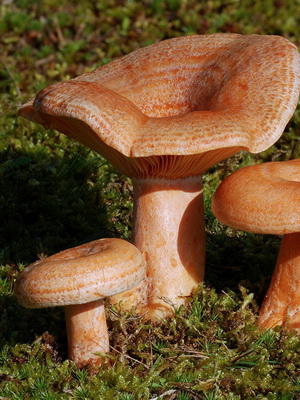
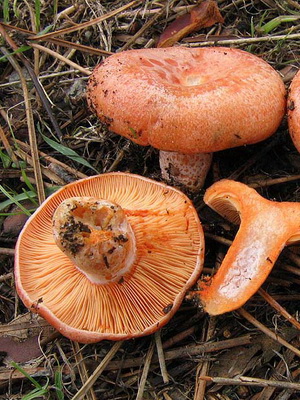
According to the photo and description, the red saffron milk cap is very similar to the real one. mushroom (Lactarius deliciosus)but it has a milky orange juice.
When it grows: from early July to mid-September in temperate countries of the Eurasian continent.
Where can I find: on the soils of deciduous forests.
Eating: delicious in any form.
Application in traditional medicine: is not used, but scientists were able to isolate the antibiotic lactarioviolin against tuberculosis from red mushroom.
Gingerbreads are real, and in what forest do they grow
Category: edible.
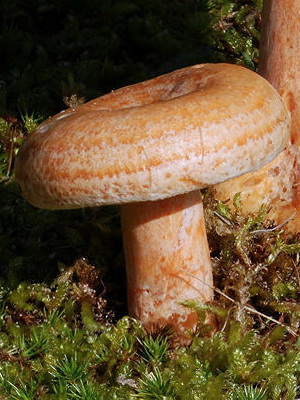
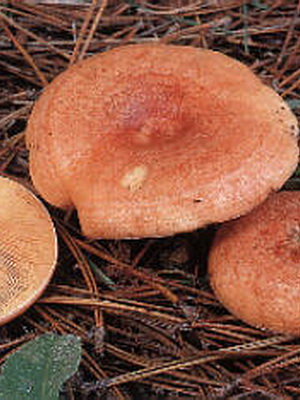
Real mushroom cap (Lactarius deliciosus) (diameter 5-14 cm): shiny, orange or reddish, may be ocher, dark yellow or reddish brown. It has characteristic concentric rings and sometimes a white coating. Convex, but over time it changes to almost flat or even depressed. The edges are usually curled towards the inside. Smooth, slippery and slightly sticky to the touch.
Leg (height 4-10 cm): of the same color with a hat, hollow, with small gouges. Expands from bottom to top. Maybe with a light fluff.
Plates: thin, the same color as the hat. Turn green from weak pressing.
Pulp: overy dense, turns green at the cut site when exposed to air, has a weak fruity odor. The milky juice is light orange in color.
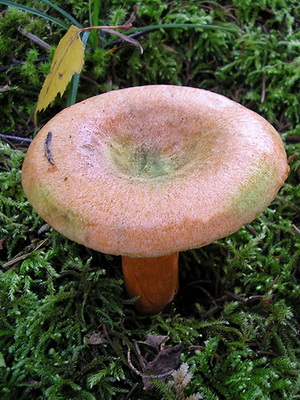
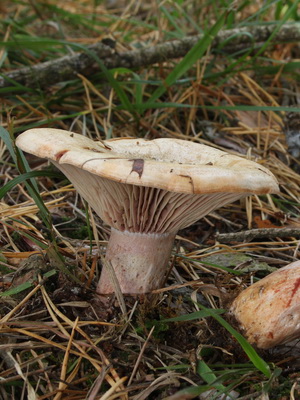
Mushrooms by photo and description are similar to mushrooms spruce (Lactarius deterrimus), are redth (Lactarius sanguifluus) and Japanese (Lactarius japonicus)... Spruce mushroom differs from the present in smaller size, and also in that it grows exclusively under spruce trees. Red has no rings on its cap and has a rich red milky juice. Japanese produces a reddish milky sap and grows only in the south of Primorsky Krai and in Japan.
When it grows: from early July to mid-September in temperate countries of the Northern Hemisphere.
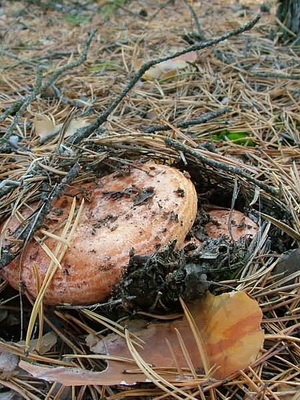
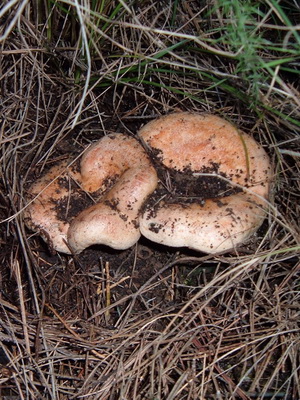
Where can I find: in coniferous forests next to spruces and pines, often buries in moss.
Eating: not suitable for drying, but excellent mushroom for pickling or pickling. There are many recipes. These are spicy mushrooms, and with bay leaves, and amazing sauces. Connoisseurs-culinary experts say that real mushrooms cannot be washed, it is enough just to wipe them to clean them of forest debris and dust.
Application in traditional medicine: is not used, but representatives of traditional medicine were able to isolate the antibiotic lactariovilin, which destroys the tubercle bacillus, from the real mushroom.
Other names: pine mushroom, common mushroom, delicacy mushroom, pine mushroom, noble mushroom, autumn mushroom.

